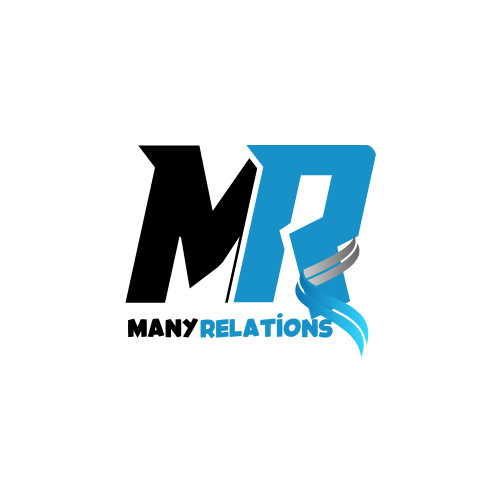Embracing Diversity, Resolving Conflict: Building Unity in Diverse Teams
In today's globalized world, diversity has become a hallmark of successful organizations, fostering innovation, creativity, and adaptability. However, with diversity comes the potential for conflict, as individuals from different backgrounds, cultures, and perspectives come together to collaborate towards common goals. Effectively addressing conflict in diverse teams requires leaders to navigate differences with empathy, respect, and inclusivity, ultimately bridging divides to foster unity and collaboration. In this article, we explore the importance of embracing diversity and provide strategies for resolving conflict and building unity in diverse teams.
Embracing Diversity as a Strength
Diversity encompasses a multitude of dimensions, including race, ethnicity, gender, age, sexual orientation, religion, socioeconomic status, and more. In a diverse team, each individual brings a unique set of experiences, insights, and perspectives to the table, enriching the collective knowledge and capabilities of the group. Embracing diversity as a strength allows teams to tap into a broader range of ideas, perspectives, and approaches, driving innovation, problem-solving, and decision-making.
Understanding the Dynamics of Conflict in Diverse Teams
Conflict in diverse teams often arises from differences in cultural norms, communication styles, values, and expectations. These differences can lead to misunderstandings, misinterpretations, and tensions among team members, hindering collaboration and productivity. Additionally, unconscious biases and stereotypes may exacerbate conflict, perpetuating divisions and undermining trust within the team. By understanding the unique dynamics of conflict in diverse teams, leaders can proactively address issues and promote understanding and cohesion among team members.
Fostering Inclusive Communication
Effective communication is essential for resolving conflict in diverse teams, as it allows team members to express their thoughts, feelings, and perspectives openly and respectfully. Inclusive communication involves actively listening to others, seeking to understand their viewpoints, and valuing their contributions regardless of differences. Leaders can foster inclusive communication by creating a safe and supportive environment where all voices are heard and respected, encouraging open dialogue, and addressing any instances of bias or discrimination promptly and constructively.
Building Cultural Competence
Cultural competence is the ability to understand, respect, and effectively interact with individuals from diverse cultural backgrounds. In diverse teams, cultural competence is essential for bridging differences, promoting collaboration, and building trust among team members. Leaders can build cultural competence within their teams by providing training and education on cultural diversity and sensitivity, encouraging cross-cultural interactions and learning opportunities, and fostering a culture of curiosity, empathy, and respect for diverse perspectives.
Promoting Empathy and Perspective-Taking
Empathy is a powerful tool for resolving conflict in diverse teams, as it allows individuals to understand and appreciate the experiences, emotions, and perspectives of others. By promoting empathy and perspective-taking, leaders can create a culture of compassion, understanding, and mutual respect within their teams. Encouraging team members to put themselves in each other's shoes, acknowledge their own biases and assumptions, and approach conflicts with an open mind and heart can help bridge divides and foster unity in diverse teams.
Establishing Common Goals and Values
While diversity brings richness and depth to teams, it is essential to establish common goals and values that unite team members towards a shared purpose. By articulating a clear vision, mission, and set of core values, leaders can align diverse team members around common objectives and priorities, fostering a sense of belonging, ownership, and commitment. When conflicts arise, referring back to shared goals and values can help team members find common ground and work together towards resolution.
Encouraging Collaboration and Teamwork
Collaboration and teamwork are essential for resolving conflict and building unity in diverse teams. By encouraging collaboration, leaders can create opportunities for team members to leverage their diverse skills, perspectives, and experiences towards shared goals. Team-building activities, cross-functional projects, and collaborative problem-solving exercises can foster trust, communication, and camaraderie among team members, strengthening the bonds that unite them despite their differences.
Leveraging Mediation and Conflict Resolution Techniques
In situations where conflicts escalate or become entrenched, leaders may need to intervene directly and facilitate mediation or conflict resolution processes. Mediation involves bringing together conflicting parties in a neutral and facilitated setting to discuss their grievances, identify common goals, and explore potential solutions with the assistance of a trained mediator. Conflict resolution techniques such as active listening, reframing, and negotiation can help participants move past impasses and reach mutually acceptable outcomes. By providing a structured framework for resolving conflicts, leaders can foster understanding, reconciliation, and closure among team members.
Celebrating Diversity and Inclusion
Lastly, it is essential for leaders to celebrate diversity and inclusion actively within their teams and organizations. By acknowledging and appreciating the unique contributions and perspectives of each team member, leaders can create a culture of belonging, respect, and acceptance. Recognizing and celebrating cultural holidays and traditions, showcasing diverse role models and success stories, and implementing inclusive policies and practices can help reinforce the value of diversity and foster a sense of pride and belonging among team members.
Conclusion: Bridging Differences, Building Unity
In conclusion, effectively addressing conflict in diverse teams requires leaders to embrace diversity, foster inclusive communication, build cultural competence, promote empathy and perspective-taking, establish common goals and values, encourage collaboration and teamwork, leverage mediation and conflict resolution techniques, and celebrate diversity and inclusion actively. By bridging differences and building unity, leaders can create a workplace culture that values and respects the unique contributions of every individual, driving innovation, collaboration, and success in the pursuit of shared goals and objectives.

.png)